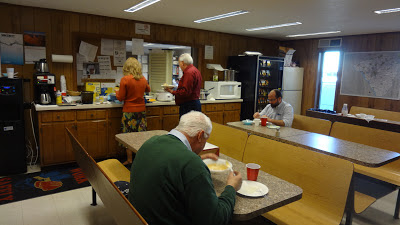There were two Ulrich Burkholders who immigrated to Pennsylvania in the 1700s. The first one came from Germany with his wife, Esther, and some of her Scherer family. They arrived in Philadelphia on the Samuel in 1732. Ulrich was a descendant of the Hans Burkholder who migrated from Switzerland to Germany. This Burkholder family lived in Gerolsheim, Germany, for several generations. Hans Burkholder II was a bishop in the Mennonite church and is well known for his correspondence with the Dutch who helped many Swiss Germans emigrate. His son, Christian, was also a minister in Gerolsheim.
We had been told my Burkholders descended from this family and that story was widely circulated until documents on both sides of the ocean confirmed in the 1990s that my Burkholders immigrated directly from Switzerland and never lived in Germany. They immigrated on the Phoenix in 1754. The father, Ulrich, had died in Switzerland but the mother, Barbara, traveled with a group of other Mennonites and brought her six children to Pennsylvania. They were: Ulrich, Barbara, Anna, Elizabeth, Peter, and Christian. I descend from Christian but his older brother Ulrich was a Mennonite minister in Brecknock Township, Lancaster County.
These two immigrant Ulrichs are often confused. I spent at least 18 months tracing the descendants of the Bowmansville Ulrich in an effort to resolve some of the confusion. The genealogy will be published in the April 2013 issue of Pennsylvania Mennonite Heritage magazine.
I knew the basic story of the "other Ulrich" but never spent a lot of time nailing down the specifics because he was not in my line. Then a Burkholder from Indiana who is one of his descendants made arrangements to come see us yesterday and take a look at his Burkholder roots. That was the incentive I needed to make me dig into it so I would know where to take him. He had only two generations (Ulrich and his son John) in Pennsylvania as the third generation moved to Ohio and the fourth generation went on to Indiana where the line stayed.
Ulrich immigrated in 1732 and warranted 200 acres in Rapho Township in 1734. Before he got the patent (deed from the Penns) he sold his rights to John Brubaker and moved to Lebanon Township where he stayed. The 400 acres he bought there is close to Annville. It is a nice flat, fertile valley and was a smart move. The land was divided between his sons with his son, John, getting a nice chunk of it. John's son, John II, moved on to Ohio and his brother Abraham got the Burkholder land.
Ulrich's son, John I, died in 1781 while Lebanon Township was still part of Lancaster County. By the time Ulrich died in 1785, Dauphin County had been divided off Lancaster County so Ulrich's will is filed in Dauphin County. Later, Lebanon County was divided off Dauphin County and the land is now in Lebanon County.
We started our tour yesterday by going to the Lancaster County Archives where we were able to see John Burkholder's original handwritten will, written in 1779. The paper is 234 years old but very legible. We got a copy of that. (I had previously gotten a copy of Ulrich's will from Dauphin County.) Then we drove up to Rapho Township where Ulrich first lived and saw that area. From there we crossed the ridge and came down into the beautiful Lebanon Valley where the Burkholders settled. I was able to locate the area where his land was by warrants and deeds and the Burkholder family cemetery which was on the farm.
This little cemetery is surrounded by a stone wall. It was used as a dump until 2009 when the junk was removed. Due to the lack of maintenance, only about four legible stones remain. We found the cemetery and stumbled through the mass of briars that cover it.
Ulrich Burkholder's son Christian is buried here.
The stone of his second wife, Anna, is in the best condition.
Since this cemetery was on Ulrich Burkholder's farm, I believe he and his wife are also buried here as well as his son, John I, and many other family members. I am sure if someone cleaned it up and started digging they would find many more stones buried underground. I would love to do that if I had the strength but I know it's out of the question. Any Burkholders out there want to volunteer to adopt this cemetery and see what we can find?












